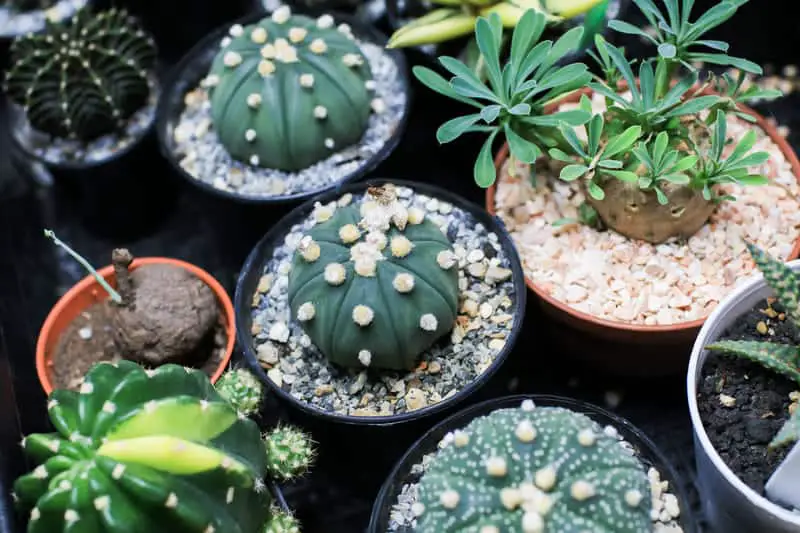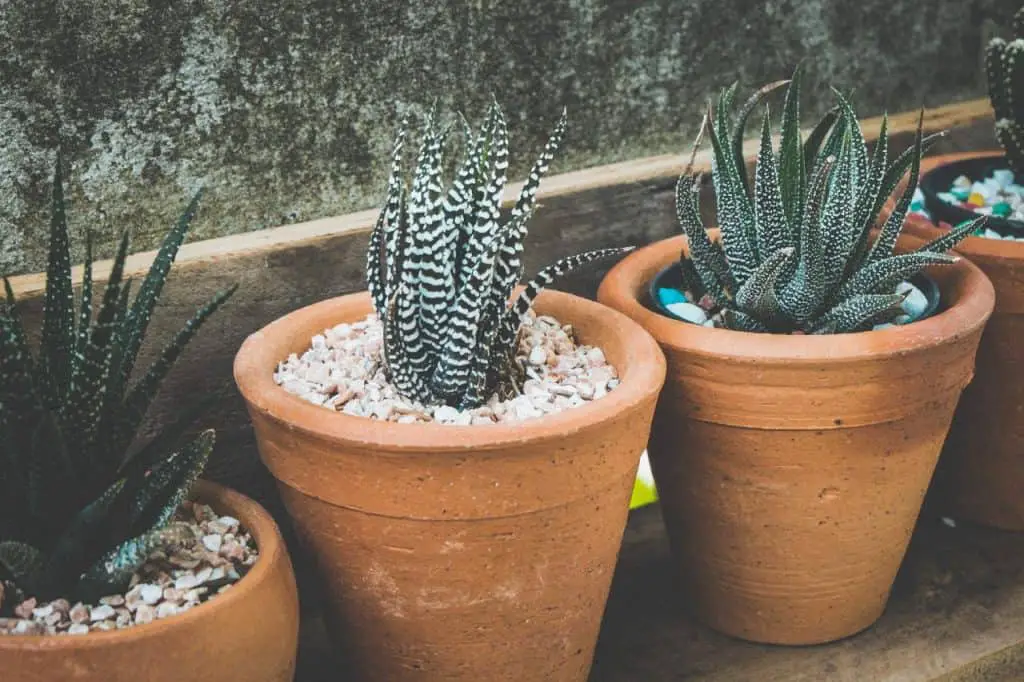There are many ways to make your pots more beautiful and esthetically pleasing.
One of the most common ways to boost the pot’s appearance is by putting decorations on top of the soil. Putting things on top of potted plants is called top dressing.
Topdressing plays a decorative role as well as improves the condition of some plants. There are various things you can put on top of the soil and use as a top dressing. Popular choices include the following:
- Charcoal
- Scoria Rock
- Iron Stone
- Sand
- Rock Gravels
- Diatomite
- Decomposed Granite
- Washed river sand
- Pebbles
All of these top dressings come in different colors and shapes. You can even mix some of them and create a nice decoration with them.
Some plant enthusiasts add other decorative pieces as well, such as crushed glass or marbles. You can even recycle unused items and add them as a top dressing in the pot.
In addition to decorative value, most of the top dressings from the list help plants and improve their overall condition.
Benefits of toppings for plants
Top dressings are not just a piece of decoration, they can improve the overall health of your plant.
Topdressing can actually take away the excessive moisture and keep the underside of the leaves dry.
It helps the airflow and reduces the chance of rotting. Putting top dressings is especially beneficial for succulents. Succulents tend to keep moisture for a very long time; therefore, top dressing helps the plant get rid of excessive water.
Another benefit of putting a top dressing is keeping the soil in the pot. You might have noticed that when you water the plants, water splashes on the leaves and gets them dirty with soil.
If you use top dressing, you are avoiding this issue. Topdressing protects the leaves of your plant from accidental watering and dirt. It also creates a barrier between moisture and the leaves.
With top dressings, you can complement the color and shape of your plant. Additionally, you can create a mini landscape and give your plant a feeling of a natural environment.
If you are a plant enthusiast, who liked to show where the plant originally comes from, adding suitable top dressing is the best way to do it.
Should I put a rock on top of my potted plants?
If you are worried that putting rocks on top of a pot might harm the plant, no need to worry.
First of all, let’s make it clear – top dressings are not for every plant, but if you have succulents then it’s a very good option. As we mentioned above, top dressings have many benefits and one of the most popular top dressings is a rock.
There are different types of rocks, with various shapes and colors. Do not use big and heavy rocks, little ones will work just fine. If you are worried about choosing the correct type of rock, use our list as a guide. You can also purchase plant top dressings and be confident that they will not be harmful to your plant.
Rock gravels are one of the best top dressings. The best thing about them is that anyone can collect them and use them as they want. If you have decided to decorate the top of the pots, just look around. Collect tiny beautiful stones and create your own decoration.
Why do you put pebbles on top of the soil?
Pebbles protect the soil from erosion and sun damage.
They create a barrier between the soil and the leaves of your plant, which reduces the chance of root rot and leaf damage.
There are pebbles in different colors and white pebbles look especially beautiful with succulents. You can choose the color of pebbles not only based on your taste but based on their nature. You should choose which pebbles to use according to the lighting and their color.
Darker pebbles absorb sunlight and keep the heat more than lighter pebbles. So, you should not put a pot with dark pebbles in a place where it will get too much direct sunlight. Dark pebble’s ability to absorb sunlight and heat endangers the health of the leaves. When the pebbles get too hot, they can burn the lower leaves. So, if you want to use dark pebbles as a top dressing, choose a darker place with little direct sunshine.
Lighter pebbles keep the heat away by reflecting the light. During hot summer days, white pebbles can protect plants from excessive heat and keep the roots cool.
Any type of pebble is useful for a succulent because of all the benefits mentioned above. The chance that pebbles will harm the plant is very low, but if you consider our recommendations, you will reduce the risk to a minimum.
Should I put sand on top of potted plants?
Putting sand on top of potted plants has its advantages and disadvantages.
The sand keeps the soil from drying out too quickly, which has a positive as well as a negative influence on a plant.
On the one hand, it is good to keep the soil moist for a quality time, but on the other hand, leaving the sand damp can cause root rot. Sand looks very beautiful as a top dressing, but you should be aware of its effects if you want to use it.
Sand covers the soil completely and does not let the air flow. You might think the same thing can occur if you use rocks, but rocks have space between them which helps the drainage as well as airflow.
Should I put rocks on the bottom of potted plants?
The short answer is no, it is not necessary to put rocks on the bottom of potted plants.
The reason is very simple, it does not help drainage or the airflow and it is simply unnecessary.
Some gardeners and plant enthusiasts use just one rock to cover the drainage hole. They use the technique to prevent soil from getting out of the drainage hole, but let the water flow. So, if you do not have this specific case, then we do not recommend putting rocks at the bottom of your plants.


